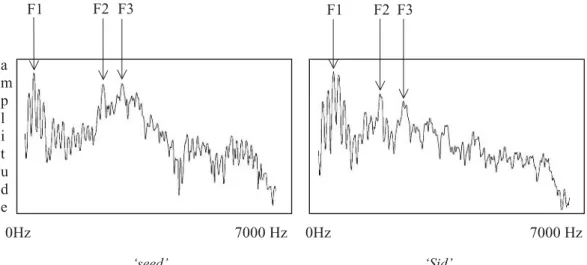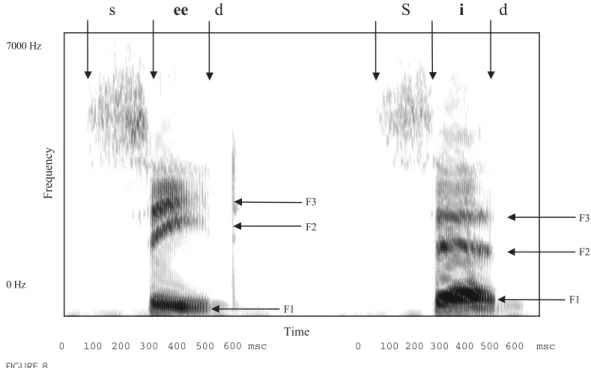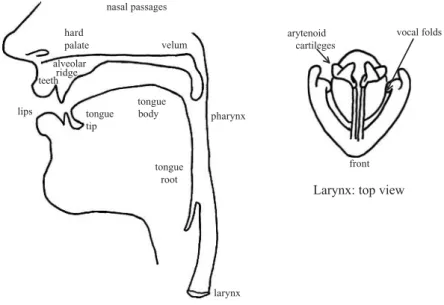Kayatko ti agyaman kadagiti adu a konsultant iti pagsasao gapu iti impormasion nga impaayda kaniak a pakairamanan da Tamwakat Gofwen (Angas), Bassey Irele (Efik), Edward Amo (Nagsayaat), John Mtenge ken dagiti pimmusay a Margaret Fivawa (Hehe), Beatrice Mulala ( Kamba ) . , Oben Ako (Kenjang), Deo Tungaraza. Kerewe, Emmanuel Manday (Kimatuumbi), Matthew Kirui (Kipsigis), Habi (Kotoko), Patrick Bamwine (Nkore), David Mndolwa (Shambaa), Kokerai Rugara (Shona), Udin Saud (Sundanese) ken Nawang Nornang (Tibetano). Ti Bantu" ket paset ti Benue-Kongo ken ti "Tiv" ket naisangayan a pagsasao iti grupo ti Tivoid dagiti akin-abagatan a pagsasao iti Bantoid.
PREVIEW
KEY TERMS
Concerns of phonology
- Acoustics
While there are words beginning with snlike snake, snipand snort, there are no words beginning with bn, and so ⴱbnick, ⴱbnark, ⴱbniddle are not English words. A description of the phonology of English would then provide a basis for characterizing such constraints on sequences of sounds.
Phonetics – what is physical sound?
- Articulation
It is the amplitude of the individual components that determine the overall shape of the resulting complex waveform. The frequencies at which these resonances occur are related to the length of the various parts of the vocal tract (ultimately related to the position of the tongue and lips while making specific sounds).
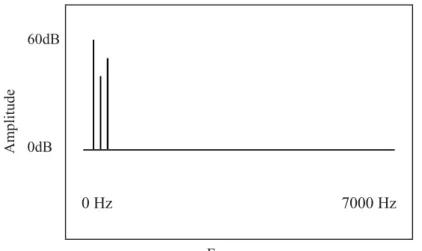
The symbolic representation of speech
Nor is the consonant in the middle of the ether the same as the one in the middle of the word (if it were, these words would be pronounced the same, and they are not). Even such sounds - representative - are not part of the set of sounds of human speech.
Exercises
Vowels: their symbols and properties
All these vowels can be characterized according to the three basic properties of vowels: height, back and roundness. When lowering occurs (symbolized by a raised exclamation point as in (6)), it means that all subsequent tones are produced with the upper and lower values of the pitch range lowered.
Consonants: their symbols and properties
- Place of articulation
- Manner of articulation
- Laryngeal properties
- Syllabicity
- Symmetry in consonants
Finally, a consonant can be formed without constriction above the glottis when the constriction is made with the vocal cords as with the laryngeal consonants h, ʔ. Rounded consonants analogously involve a protrusion of the lips (as do round vowels and glide w).
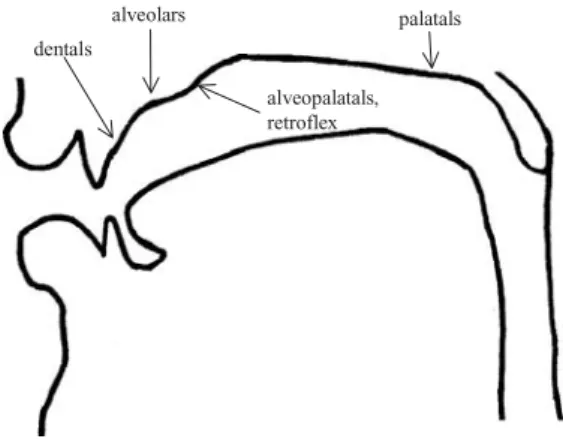
IPA symbols
To further illustrate these symbols, consider the transcription of some English words using a broad phonetic transcription, that is, one that does not include many predictable phonetic details—we will address the issue of predictable speech features. in more detail in the following chapters. This is (almost always) the spelling pronunciation - the first unstressed vowel is pronounced schwa ([ə]) in American English.
Illustrations with English transcription
So the transcriptions [seym] same, [town] tone, [tiym] team and [tuwn] tune are phonetically more accurate characterizations of the pronunciations of these words. The most important features of vowels are the front of the tongue (front, middle and back), rounding and vowel height (high, middle and low, with tenseand lax variants of high and mid vowels).
Vowels
Vowel diacritics
Consonants
Phonetic symbols (APA)
Consonant diacritics
IPA symbols
- English consonantal allophones
- Aspiration
- Flapping
- Glottal stop
- Allophony in other languages
Give the articulatory description of the following segments (assume the American transcription system in cases where the symbol is ambiguous between the two systems). Since aspirated and simple consonants appear at the end of the word ([tshɔst] . 'eye,' [tshəth] 'honour'), the following context alone cannot regulate aspiration.
1 Kuria
The linguist looks for regularities in the distribution of one sound versus others and tries to reduce several surface segments to a basic segment, a phoneme, from which the related segments are derived by applying a rule to the underlying phoneme in some context. If you go beyond the static distribution of sounds, you should look for cases where the pronunciation of morphemes changes depending on the presence or absence of prefixes and suffixes.
2 Modern Greek
3 Farsi
4 Osage
5 Amharic
6 Gen
7 Kishambaa
8 Thai
9 Palauan
10 Quechua (Cuzco dialect)
11 Lhasa Tibetan
The importance of correct underlying forms
However, in some stems there are differences in the final consonant of the root, depending on whether we mean the nominative or the gender. Suppose, first, that we decide that the noun stem form we see in the nominative is also the base form.
Refining the concept of underlying form
The underlying form of the word [kts] is /kt-z/, since that is what results in the morphology by applying the rule that combines a noun stem such as cat with the plural suffix. The underlying form of the plural word [kts] is not /kt/, because the plural word must have the plural morpheme.
Finding the underlying form
We can assume that the basic form of the root is the same as the noun (which has no suffix). As the following examples illustrate, the surface form of the plural suffix varies between [s] and [z].
Practice at problem solving
Again, since the presence of the H is unpredictably correlated with the prefixes -mu- and -i-, we assume that the tones are part of the underlying representation of the prefixes – the prefixes are /mú/ and /í/, and the H tone shifts to the right by the tone shift rule we already set. What is the underlying form of these verb stems, and what phonological rule or rules are required to account for the variations seen in the surface form of the different stems.
Underlying forms and sentence-level phonology
- Korean final Cs
- Kimatuumbi tone
The final consonant of the word for "chestnut" is always [m], so we would assume that the base form of that word is /pam/. The words in (25) have an H tone (marked with a sharp accent) on the second vowel from the beginning of the word when spoken alone.
Underlying forms and multiple columns in the paradigm
Examples such as oloiɑ, ɑŋɑiɑandusuias suggest that the perfective suffix is -iɑ, and the simple form of the verb reflects the underlying form of the root. Here we see that the perfective form of the verb contains a consonant which is not present in the simple form.
1 Axininca Campa
The underlying form and the rule system are thus related: By making the right choice of underlying form, and given the right rule system, the rules will function correctly on precisely the segments that participate in the exchange. The key to making the right decision about underlying forms is to carefully consider different hypotheses: if a segment of a morpheme has two or more surface realizations, it is often necessary to consider two or more possibilities of the underlying – is variant [ a], [b] or [c] the correct choice.
2 Kikuyu
Summary Establishing the correct underlying representation for a morpheme is the most important first step in providing a phonological analysis of data. The underlying form may not even be seen directly in any single pronunciation of a morpheme: it may be a form inferred from the consideration of a number of specific instantiations of the morpheme.
3 Korean
A correct underlying representation unites surface variants of a morpheme, recognizing the basic 'similarity' of a morpheme regardless of variations in pronunciation that arise from phonological rules applying. The underlying form may not even be seen directly in a statement of a morpheme: it may be a form derived from considering some specific instantiations of the morpheme. don't worry about it.).
4 Hungarian
5 Kuria
6 Farsi
7 Tibetan
8 Makonde
9 North Saami
Votic: palatalization and raising/fronting
Separating the effects of different rules
- Kamba: palatalization and glide formation
- Bukusu: nasal ⫹ consonant combinations
- Kimatuumbi
- Lamba: harmony and palatalization
Sonorant stops are not common in the world's languages and are generally restricted to nasals. There is an independent rule in the language which assimilates a nasal to the place of articulation of the following consonant (we have seen that rule in earlier Kimatuumbi data in Chapters 3 and 4).
Different effects of rule ordering
- Voicing and epenthesis
- Lomongo: B-deletion and resolution of vowel hiatus
- Examples for discussion
We would assume that the underlying forms of the prefixes are /at/ and /ap/, and that there is a rule voting obstruents before voiced obstruents. The underlying forms of the subject prefixes are /N/ (which represents a nasal consonant, the exact place of articulation of which cannot be determined), /o/, /a/, /to/, /lo/ and /ba/ .
1 Kerewe
2 Polish
3 Ancient Greek
4 Shona
5 Catalan
6 Finnish
7 Korean
Possible differences in sounds
One way to approach the question is to collect sound samples of all languages in the world.
Scientific questions about speech sounds
- Possible rules
The differences in pronunciation come from detailed rules that are part of the phonetic grammars of the languages. English has rules that define allowed groups of two consonants at the beginning of the word.
Distinctive feature theory
- Phonetic preliminaries
- Major class features
- Place of articulation
- Manner of articulation
- Laryngeal features
- Prosodic features
- Summary of feature values
Note that the feature [strident] is defined in terms of the aerodynamic property of greater turbulence (which has the acoustic correlate of greater noise), not in terms of the movement of a particular articulator - this defining property is accomplished by different articulatory configurations. These consonants are produced with the body of the tongue up and in front, and therefore have the feature values [hi,back].
Features and classes of segments
- Possible phonemes
Each of the following sets of segments can be defined in terms of a set of distinctive features. The functions used to precisely define a set of segments depend heavily on what the whole set of segments is in the language.
Possible phonemes and rules – an answer
- Rule formulation and features
Such a rule would disprove the fundamental claim of the theory that processes must be describable in terms of these (or similar) characteristics. The matrix to the left of the arrow is the segment modified by the rule;.
The formulation of phonological rules
The matrix immediately to the right of the arrow is the structural change and describes the way in which the target segment changes. As focus means that the segment described to the right of the arrow is inserted into the specified context; and as a structural change means that the specified segment is deleted.
Changing the theory
The limited number of features actually in use is an indication of the caution with which features are added to the theory. This function was not part of the set of functions proposed in Chomsky and Halle (1968).
Summary
- The data
- Yawelmani
- The first step: morphology
- Identifying phonological regularities
- Evaluating alternatives
- The data
- Hehe
- Morphological analysis
- Phonological alternations
- Extending the data
- The data
- Icelandic
At the bottom /do:s-hin/ goes down (7) and gives the surface form [doshin] – all other forms retain the underlying length of the vowel. First suppose that the vowel is not part of the underlying representation of the stem.
